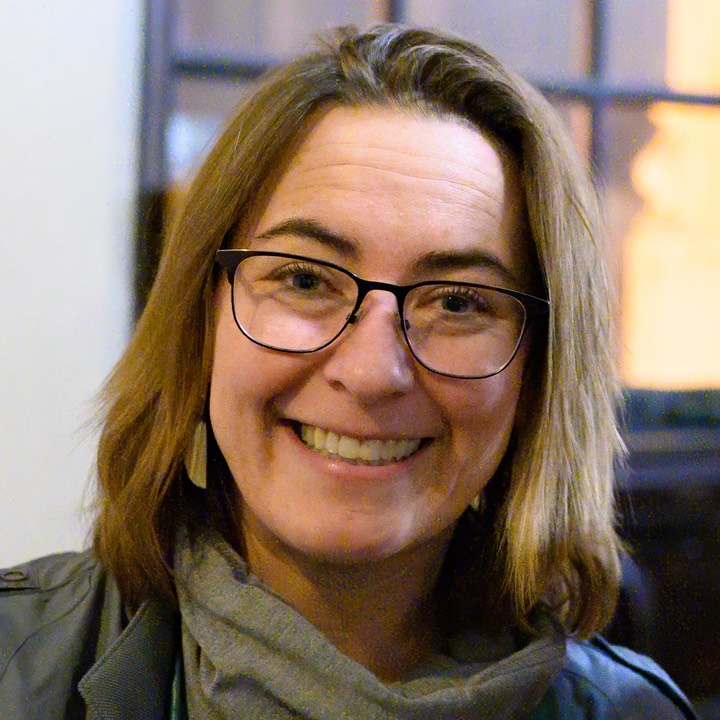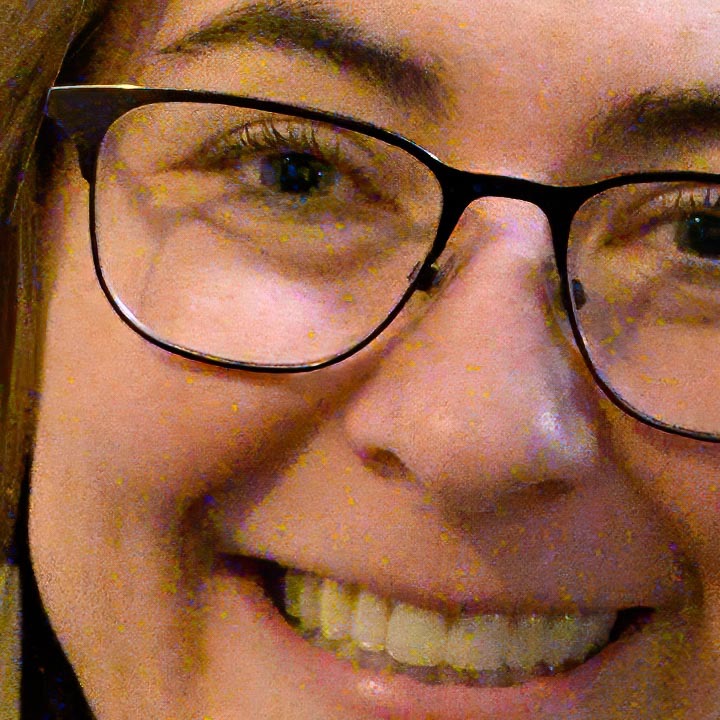In post processing, noise reduction and sharpening go hand in hand with one being traded off against the other. Noise, generally caused by needing to increase ISO in low light, will reduce detail. Sharpening increases (perceived) detail but also enhances noise. Finding the optimum combination is challenging (for me).
The good news is that modern cameras (like the Z7, SONY A7R III, etc.) have both great resolution (>45Mpix) which yields sharp pictures out of the camera, combined with excellent noise performance requiring little noise reduction except at very high ISO's or when shadows need to be pulled up (usually due to under exposure).
Nevertheless, there are circumstances where noise reduction needs to be applied and I want to find out the optimum process to achieve the best image quality.
Causes of noise:
Noise is caused by random fluctuations in the number of photons captured by the image sensor. With adequate lighting, these random fluctuations are swamped by the light source and are not visible. The ratio of the signal generated by the main lighting to the "background" light is called the signal to noise ratio (SNR). Even when the background light is completely dark, there is still some photon activity that generates noise. At low light levels, at base ISO, there may not be enough light entering the camera (determined solely by aperture and shutter speed) to allow a properly exposed image. In this case, the signal from the camera can be amplified (by increasing ISO) to achieve the correct exposure. By amplifying the image, both the signal and the noise are amplified. Thus, at low light, the SNR will start to be reduced as the light levels reduce and the ISO is increased. The chart below is for the Nikon D850 (courtesy of DXO) which shows the decline in SNR as the ISO is increased.

You may notice that this line is not exactly linear (on a log scale). If it were, then you would be able to capture an image at any exposure and adjust in post to achieve the desired result without SNR penalty. The camera would then be "ISO-less". In reality, other sources of noise become significant as the ISO (amplification) is increased. In particular, read noise post-ADC amplification can affect the overall SNR thus causing a "bending" of the SNR curve. If this happens, it is generally better to capture the image at the correct exposure setting (correct ISO) than trying to achieve the same result in post (at base ISO). For the D850, this camera is "almost" ISO-less and represents state of the art in noise management.
For further information, see my previous analysis on this topic:
Noise reduction requirements depend largely on what the final rendering of the image is intended. For Social media posts, needs are pretty relaxed, for high quality exhibition prints, the needs can be exact. For me, this is not the deciding factor. I want to create the "perfect" reference copy of an image I wish to keep. I want the flexibility, at some later date, to express the image either on Instagram or on a large print. In post processing I don't necessarily want to have to decide at that point. So, I'm going for perfection in noise reduction and sharpening.
Modern Noise Reduction.
Rev. 2020_0221
In editing the images I took in Colombia, I tried another noise reduction method (see below), good for very noisy images (ISO-3200 or greater AND underexposure or deep shadows). The workflow is to use a combination of DXO Prime followed by Topaz Denoise AI (TIFF export), set to Auto. The second step provides an extra layer of noise reduction plus some sharpening. Overall, good results.
Rev. 2020_0202
I have had disappointing results with Topaz Denoise AI (see below). However, I found that if I open the original RAW file in the app (versus a TIFF conversion from LR Classic) then I get much better results, comparible to DXO. DXO does have a benefit in that it also will adjust brightness, contrast, etc.. making the output image a bit brighter than Topaz. Unfortunately, the Topaz process requires manual import of the processed (DNG) file back into Lightroom.
Rev. 2019_12/19
I discovered that some people are using combinations of NR plugins to get the best results. Here’s an example from the DPReview retouching forum:
" I did a comparison of DeNoise AI and DxO PRIME, two of the best NR tools. They work quite differently, and I found that the best results were obtained by first using PRIME on RAW images, and then DeNoise AI on the exported image. Only very noisy images need this double dose of NR. With LR, you might try something similar: first use LR's NR, and if it's not enough, then DeNoise AI.
It is possible to use DeNoise AI directly on RAW images, but I would not recommend it."
Rev. 2019_7/7
Since the last experiments, Topaz Labs has introduced a new noise reduction plug-in - Topaz DeNoise AI ( which includes AI Clear). I tested it on the same images. Here’s the result:
2000 X 2000 crop

720 X 720 crop:

These images look a mess. Not sure if this plug-in is working correctly (I used the “Auto” setting). Anyway, this plug-in is to be avoided for now.
I also tried Noiseless CK. This gave similar results to Topaz AI Clear and DXO. Not quite as detailed. Probably will not use since the others are so good.
Bottom line: For images that don’t need much cropping, I’d use DXO (and maybe Topaz AI Clear). For tightly cropped images, I’d use Topas AI Clear
Rev. 2018_1209
As of late 2018, there are a number of high quality noise reduction products available:
DXO Prime noise reduction. This adjustment module is part of DXO Photolab and has the reputation as one of the best noise reduction capabilites around. DXO has a plug-in which allows LR to "transfer" RAW images from LR to DXO Photolab where noise reduction can be applied. The resulting image can be returned to LR as a DNG file for later processing thus preserving the RAW (non destructive) workflow. Depending on other settings in DXO, other image optimizations can be (automatically) performed prior to returning to LR. In general the default adjustments are worth retaining. DXO Photolab2 now supports Nikon Z7. Unfortunately, for some reason, DXO does not support Fuji RAW file formats nor can it accept DNG files as input.
Topaz De-noise. Round-tripping to LR is by way of TIFF conversion so make sure basic adjustments are made prior to noise reduction. This is one of these noise reduction apps which can make automatic decisions about shadow versus highlight noise reduction. It has a number of pre-set adjustments, including those for RAW files and some camera profiles, which are quite handy. This version seems to be stuck at 6.0.2 which does not support profiles for the latest Nikon cameras (like Z7).
Topaz AI Clear. This is a new capability, both standalone and LR plugin (via TIFF), which claims to use "AI" techniques to provide superior noise reduction. Tests have shown that this can be the case but also that it can make "mistakes" in interpreting the image and so big errors can occur. I have not yet encountered these but I'm sure I will. This plug-in also does some sharpening based on the amount of noise. If this works it could be convenient.
Other capabilities include LR's own NR module as well as various techniques in PS that are much more manual in technique.
Other:
Skylum Creative Kit Noiseless CK
NIK Define2
Imagenomic Noiseware (Photoshop plugin)
Capture One 12
Let’s do some comparative tests:
This is a crop of an image taken on the Nikon Z7 at ISO 3200. It was shot (accidentally) underexposed by 2 stops and adjusted +2 in LR. Using LR default NR.
2000 X 2000 crop

Below: 720 X 720 crop

Quite noisy.
DXO PRIME NR:


Topaz AI Clear:


Conclusion;
I think that DXO Prime and Topaz AI Clear, when applied to the uncropped image, achieve similar NR results. The final images have a slightly different “look” which suggests that one may be better than the other for certain images. DXO has the advantage that it returns DNG files while Topaz needs conversion to TIFF. On the other hand, AI Clear can be applied to the cropped images which results in slightly better NR quality. DXO (DNG) only works on the original, unprocessed RAW file
Sharpening
Rev. 1, 08182010
Introduction.
Sharpening has a big impact on the overall quality of photographic images. The sharpness of an image is impacted by a number of factors:
- 1.Camera dependent.
- a.Anti-aliasing filter on the sensor
- b.Image sensor resolution
- c.Lens performance
- a.Anti-aliasing filter on the sensor
- 2.User dependent.
- a.Motion Blur
- a.Motion Blur
- 3.Printer dependent (for printed images)
- a.Printer resolution, accuracy, settings and performance
- b.Paper quality and style
- a.Printer resolution, accuracy, settings and performance
Lately I have been looking at a particular form of sharpening, known as Capture Sharpening. This type, and the tools used, are intended to compensate for the blurring effect of anti-aliasing filters on the image sensor. Correct capture sharpening will remove this blurring and extract the full detail of the image without undesirable artifacts like halos. Other forms of sharpening include Creative Sharpening (used to selectively sharpen an image for creative effect, eg eyes) and Output Sharpening (used to compensate for the de-sharpening effect of most printers such that the final print looks just like the screen image (in detail).
Capture Sharpening.
I’ve been playing with various settings in Lightroom, CS5 and Raw Developer. It is commonly thought that a technique known as “De-convolution sharpening” produces the best results since this it tries to “neutralize” the anti-aliasing filter, mathematically. To date, the only de-convolution algorithms available are in Raw Developer and (I think) in CS5 smart sharpen (lens blur setting). For an interesting article related to this see:
http://diglloyd.com/prem/prot/DAP/LeicaS2/compare-D3x-mosaic-2.html
Having played with all combinations, I have concluded the following:
In Lightroom, settings for D700:
Amount 53
Radius 0.7
Detail 74
Masking 0
These settings are a good compromise between sharpness, detail and avoidance of halos. I’m guessing it is specific to the D700 so I need to re-test with the D300. Note: I have now tried it with the D7000 and the V1 and it looks pretty good for all cameras (surprising!)
The settings are in the Preset “D700_Presharp_Detail_Ramsay”. (to be modified)
In CS5, I found the Smart Sharpen, Lens blur, with default settings does a good job also.
I was a bit disappointed with RD because settings for reasonable sharpness produced noticeable halos. This is kind of a relief since I’d prefer to stay within the confines of Lightroom/CS5 anyway.
Lightroom has a couple of standard presets “Sharpening - Narrow Edges” and “Sharpening - Wide edges”. both are useful but less aggressive than mine.R